
Kuressaare Castle: Estonia's Medieval Marvel
Discover the medieval wonders of Kuressaare Castle in Estonia, a timeless fortress offering rich history, stunning views, and enchanting gardens on the island of Saaremaa.
Kuressaare Castle is a magnificent medieval fortress located on the island of Saaremaa in Estonia. This well-preserved castle dates back to the 14th century and is a prime example of Gothic architecture in the Baltic region. As you approach, the imposing stone walls and moat transport you back in time to an era of knights and nobility. Inside the castle, you will find a fascinating museum that offers a rich collection of historical artifacts, exhibitions, and interactive displays. The museum covers the history of Saaremaa from prehistoric times to the present day, with a particular focus on medieval life. Don't miss the chance to climb the castle towers for a stunning panoramic view of the surrounding landscape. The castle grounds are equally enchanting, featuring beautiful gardens and tranquil walking paths. Take a leisurely stroll around the moat, or enjoy a picnic in the shadow of the castle walls. The nearby Kuressaare town center is also worth exploring, with its charming streets, cafes, and shops offering a taste of local culture and cuisine.
Local tips in Kuressaare Castle
- Visit during summer for the best weather and outdoor events.
- Wear comfortable shoes as the castle grounds are extensive.
- Check the local calendar for medieval festivals and special exhibitions.
- Try the local food and drink at nearby cafes and restaurants.
- Rent a bike to explore the scenic surroundings of Saaremaa island.
Kuressaare Castle: Estonia's Medieval Marvel
Kuressaare Castle is a magnificent medieval fortress located on the island of Saaremaa in Estonia. This well-preserved castle dates back to the 14th century and is a prime example of Gothic architecture in the Baltic region. As you approach, the imposing stone walls and moat transport you back in time to an era of knights and nobility. Inside the castle, you will find a fascinating museum that offers a rich collection of historical artifacts, exhibitions, and interactive displays. The museum covers the history of Saaremaa from prehistoric times to the present day, with a particular focus on medieval life. Don't miss the chance to climb the castle towers for a stunning panoramic view of the surrounding landscape. The castle grounds are equally enchanting, featuring beautiful gardens and tranquil walking paths. Take a leisurely stroll around the moat, or enjoy a picnic in the shadow of the castle walls. The nearby Kuressaare town center is also worth exploring, with its charming streets, cafes, and shops offering a taste of local culture and cuisine.
When is the best time to go to Kuressaare Castle?
Iconic landmarks you can’t miss
Kuressaare linnus
Explore the stunning Kuressaare Castle, a medieval fortress that captures the essence of Estonia's rich history and breathtaking natural beauty.

Sõrve Lighthouse
Experience the breathtaking views and maritime heritage at Sõrve Lighthouse, a must-visit gem on Estonia's Sõrve Peninsula.

Ku-Kuu Fish Restaurant and Guesthouse in Kuursaal
Experience the best of seafood dining in a historical setting at Ku-Kuu Fish Restaurant and Guesthouse in Kuressaare, surrounded by nature's beauty.

Angla Windmill Park
Experience the beauty and history of Angla Windmill Park, a serene escape showcasing Estonia's cultural heritage and stunning landscapes.

Ruins of Maasi castle
Uncover the historical allure of Maasi Castle ruins in Saare County, Estonia, where history meets breathtaking natural beauty.

Suur Tõll ja Piret
Explore the legendary figures of Suur Tõll and Piret in Kuressaare, a captivating blend of folklore and natural beauty in Estonia's Saare County.

Kuressaare raekoda – Saaremaa Vallavolikogu
Discover the architectural beauty and cultural significance of Kuressaare Raekoda, the heart of Saaremaa's local governance and art scene.

SAARE KEK
Explore the rich history of Estonia at SAARE KEK, a unique museum in Kuressaare, offering immersive exhibits and exciting escape room experiences.

Saaremaa Muuseum
Uncover the captivating history of Saaremaa at Saaremaa Muuseum, a must-visit cultural gem in the heart of Kuressaare.

Keskaja Elamuskeskus/ Medieval Activity Centre/ Archebald
Experience the magic of the Middle Ages at the Medieval Activity Centre in Kuressaare, where history comes alive through engaging activities and exhibits.

The Aavik House Museum
Explore the Aavik House Museum in Kuressaare for a deep dive into Estonian culture and history, all within a stunning historical setting.

Kuressaare kindluse pukktuulik
Explore Kuressaare Castle, a stunning medieval fortress in Saare County, rich in history, architecture, and local culture, perfect for all travelers.
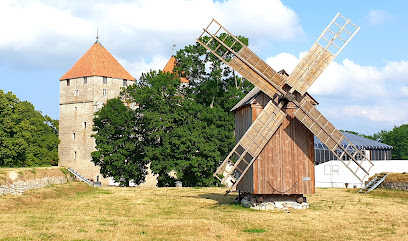
Kuressaare linnuse vallikraav
Discover the tranquil beauty of Kuressaare Linnuse Vallikraav, a picturesque lake steeped in history and surrounded by nature's charm.

Kressaare Castle 3D-Model
Discover the enchanting Kuressaare Castle 3D-Model, a captivating representation of medieval architecture and history in Saare County, Estonia.

Unmissable attractions to see
Angla Windmill Park
Experience the beauty and heritage of Estonia at Angla Windmill Park, where history and nature come together in a breathtaking landscape.

Muhu Ostrich Ltd.
Explore the unique charm of Muhu Ostrich Ltd. in Saare County, where adventure meets education in an unforgettable ostrich experience.

Kaali meteoriitika ja paekivimuuseum
Explore the Kaali Meteorite Crater and Museum, a fascinating blend of science and natural beauty in Estonia's stunning Saare County.

Suur Tõll ja Piret
Explore the captivating legends of Suur Töll and Piret in Kuressaare, where folklore meets stunning landscapes in the heart of Saare County.

Sõrve Muuseum
Explore the rich maritime and military heritage of Estonia at Sõrve Muuseum, a hidden gem in Saare County showcasing unique artifacts and engaging exhibits.

Koigi bog and hiking path
Explore the enchanting landscapes of Koigi Bog and Hiking Path in Saare County, a perfect destination for nature lovers and hiking enthusiasts.

WOW Keskus
Experience a world of joy at WOW Keskus, the ultimate children's amusement center in Kuressaare, where fun meets adventure in a vibrant setting.

Odalätsi allikad
Explore Odalätsi Springs: A serene natural haven in Saare County, perfect for relaxation, nature walks, and stunning photography.

Thule Koda / Thule Kino / Konverentsid
Explore the cultural gem of Kuressaare at Thule Koda, where history, cinema, and delicious cuisine come together in a delightful experience.

Salme ship's funeral
Explore the Salme Ship's Funeral site, a unique historical landmark revealing the secrets of Viking maritime traditions in stunning Saare County, Estonia.

Ohesaare bank
Explore the serene Ohesaare Bank in Estonia, where breathtaking coastal views and rich biodiversity await nature lovers and adventure seekers.
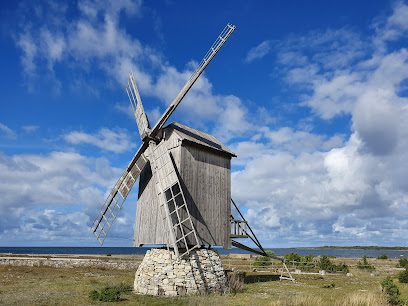
Saaremaa Muuseum
Discover the captivating history of Saaremaa at Saaremaa Muuseum, where the past comes alive through engaging exhibits and local stories.

Boulder Piretikivi
Discover Boulder Piretikivi, a serene natural wonder in Saare County, Estonia, ideal for nature lovers and scenic photography.

Laurentiuse kirik
Explore the architectural beauty and tranquil atmosphere of Laurentiuse Kirik in Kuressaare, a historical church reflecting the rich heritage of Saare County.

Valjala hill fort
Explore Valjala Hill Fort, a historic fortress in Saare County, Estonia, where medieval history meets stunning natural beauty.

Essential places to dine
Saaremaa Veski
Experience culinary excellence at Saaremaa Veski - where every meal is steeped in history and flavor.

GOSPA / Georg Ots Spa Hotel
Discover tranquility at GOSPA / Georg Ots Spa Hotel in Kuressaare – where luxury meets nature for an unforgettable getaway.

Johan Spa Hotell
Discover ultimate relaxation at Johan Spa Hotell in Kuressaare - where luxury meets tranquility amidst stunning natural beauty.

Castello Restoran Pizzeria
Discover the authentic flavors of Italy at Castello Restoran Pizzeria in Kuressaare – where every meal feels like a culinary journey.

Ku-Kuu Fish Restaurant and Guesthouse in Kuursaal
Experience exquisite seafood at Ku-Kuu Fish Restaurant and Guesthouse while enjoying breathtaking views of Kuressaare Castle.

Arensburg Boutique Hotel & Spa
Discover luxury and tranquility at Arensburg Boutique Hotel & Spa in Kuressaare – your ultimate getaway with exquisite dining and rejuvenating spa experiences.

Chameleon Lounge
Discover the vibrant flavors of Chameleon Lounge in Kuressaare - where delicious food meets exceptional cocktails in a stylish setting.

Ristorante la Perla
Experience authentic Italian flavors at Ristorante la Perla in Kuressaare - where every meal tells a story.

Kodulinna lokaal
Experience delightful flavors at Kodulinna Lokaal, Kuressaare's premier gastropub offering local cuisine with modern twists.
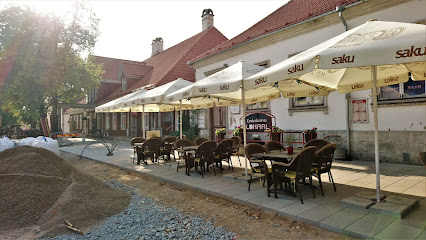
Resto HAFEN
Experience authentic Estonian flavors at Resto HAFEN in Kuressaare – where local ingredients meet culinary excellence.

Pritsumaja Grill & Bar
Experience the best of Estonian cuisine at Pritsumaja Grill & Bar in Kuressaare - where local flavors meet international flair.

Vinoteek Restoran Prelude
Discover exquisite dining at Vinoteek Restoran Prelude in Kuressaare - where local flavors meet global wines for an unforgettable culinary journey.

Restaurant Good Mood Food
Discover delicious health food at Restaurant Good Mood Food in Kuressaare – where nutritious meets delightful in every bite!

WAAG restobar
Discover the culinary treasures of Estonia at WAAG Restobar in Kuressaare - where local flavors meet warm hospitality.

omnom söök & jook
Discover the authentic flavors of Estonia at Omnom Söök & Jook in Kuressaare – where culinary creativity meets local charm.
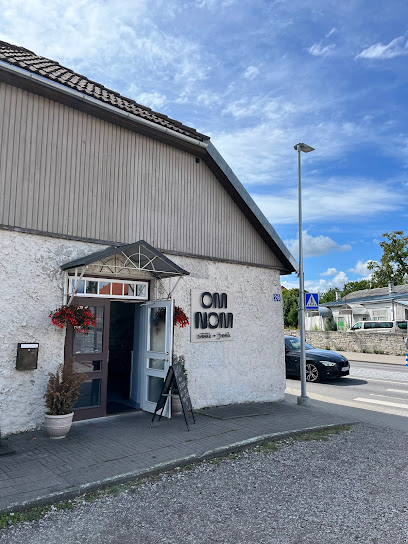
Markets, malls and hidden boutiques
Kuressaare linnus
Explore the historical wonders of Kuressaare Castle, a stunning medieval fortress and museum on Saaremaa Island, Estonia.

Saaremaa Kaubamaja
Explore Saaremaa Kaubamaja: A vibrant shopping destination in Kuressaare offering local flavors and international brands.

Suur Tõll ja Piret
Explore the captivating legends of Suur Tõll and Piret, iconic sculptures in Kuressaare, Estonia, surrounded by breathtaking coastal beauty.
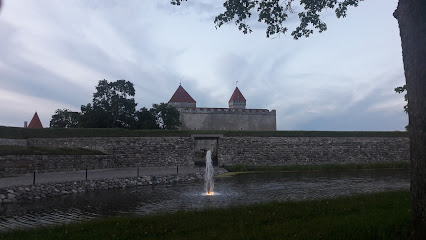
Mareti kaubamaja
Explore the eclectic charm of Mareti Kaubamaja, a used clothing store in Kuressaare offering sustainable fashion treasures and unique finds.

SAARE KEK
Experience Estonia's history and culture at Saare KEK, a dynamic museum featuring immersive exhibits, escape rooms, and live music events.

Saaremaa Muuseum
Explore the captivating history of Saaremaa Island at Saaremaa Muuseum, where local culture and heritage come alive through engaging exhibits.
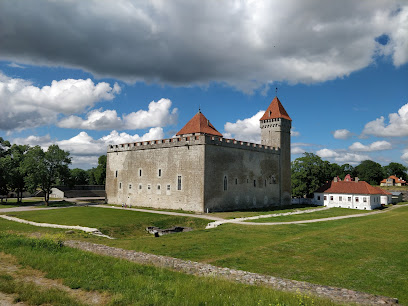
BÖNS Pagaristuudio
Discover the delightful flavors of BÖNS Pagaristuudio, Kuressaare's top bakery and café for artisanal pastries and specialty coffee.

Keskaja Elamuskeskus/ Medieval Activity Centre/ Archebald
Experience the thrill of the Middle Ages at the Medieval Activity Centre in Kuressaare, where history comes alive through interactive fun and engaging learning.

Kuressaare Humana
Explore the charm of second-hand shopping at Kuressaare Humana, where unique fashion meets affordable prices in the heart of Saare County.

Kuressaare raegalerii – Kuressaare Kultuurivara
Explore the vibrant art scene at Kuressaare Raegalerii, an inspiring gallery showcasing contemporary and traditional artworks in the heart of Kuressaare.

OÜ Piipuu
Explore the charm of OÜ Piipuu, a unique used furniture store and hostel in Kuressaare, where vintage treasures await every traveler.

Varamu OÜ
Explore Varamu OÜ in Kuressaare for a unique collection of rare books and antiques, perfect for collectors and history enthusiasts.
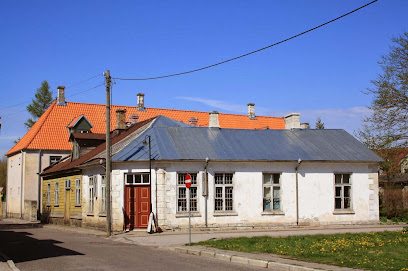
www.nola.ee
Explore a charming local store in Kuressaare offering unique Estonian crafts and souvenirs that capture the essence of Saare County.

Sokisahtel Kuressaare
Explore unique Estonian fashion at Sokisahtel Kuressaare - a must-visit clothing store in the heart of Kuressaare!
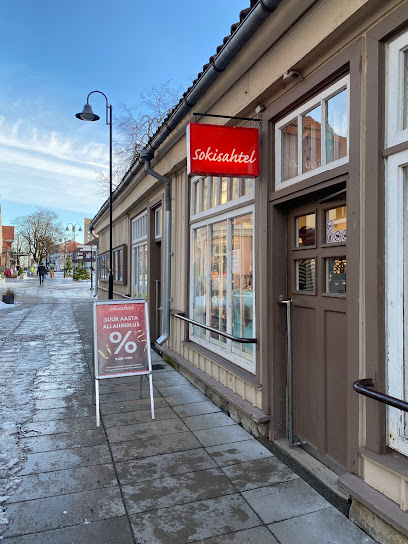
Metsa ost - Eesti Erametsa Ühing
Explore the charm of Kuressaare at Metsa ost - a hidden gem for antique lovers seeking unique treasures in Estonia.
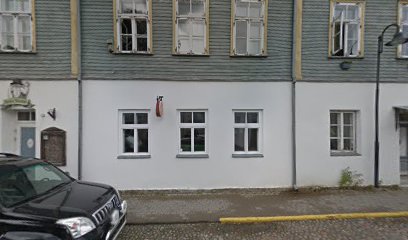
Essential bars & hidden hideouts
Mönus Villem
Discover the vibrant atmosphere and local flavors at Mönus Villem Pub in Kuressaare, a must-visit for every traveler.

Castello Restoran Pizzeria
Savor authentic Italian cuisine at Castello Restoran Pizzeria in Kuressaare, where every bite transports you to Italy.

Ku-Kuu Fish Restaurant and Guesthouse in Kuursaal
Experience exquisite seafood dining in a historic setting at Ku-Kuu Fish Restaurant and Guesthouse in Kuressaare.

Chameleon Lounge
Experience the perfect blend of relaxation and exquisite cuisine at Chameleon Lounge in Kuressaare, your go-to lounge for diverse culinary delights.

Kodulinna lokaal
Discover the flavors of Estonia at Kodulinna Lokaal, a charming gastropub in Kuressaare, serving innovative dishes and local beverages.
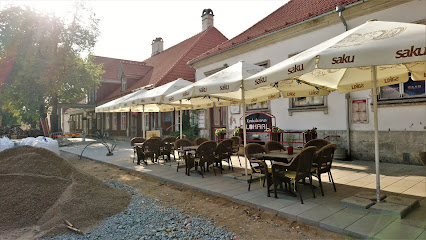
John Bull Pub
Experience the vibrant atmosphere and local flavors at John Bull Pub in Kuressaare, where every visit is a celebration of Estonian culture.

Pritsumaja Grill & Bar
Experience the vibrant flavors of Estonia at Pritsumaja Grill & Bar, a culinary gem in Kuressaare offering fresh, local dishes and a warm atmosphere.

Vinoteek Restoran Prelude
Discover culinary excellence at Vinoteek Restoran Prelude in Kuressaare, where exquisite cuisine meets an extensive wine selection in a charming setting.

Kapteni Kõrts & Resto
Kapteni Kõrts & Resto: A Culinary Gem in Kuressaare Offering Local Flavors and Cozy Atmosphere Perfect for Tourists.

WAAG restobar
Experience the authentic flavors of Estonia at WAAG Restobar, a culinary jewel in Kuressaare, offering a menu that delights every palate.

omnom söök & jook
Discover the vibrant flavors of Estonia at Omnom Söök & Jook, your go-to restaurant and bar in Kuressaare for a delightful culinary experience.

Söstar köök & baar
Discover exceptional flavors at Söstar köök & baar, a cozy dining oasis in Kuressaare offering local and international cuisine.

Kuldoda OÜ
Discover the flavors of Estonia at Kuldoda OÜ, a charming restaurant in Kuressaare known for its local dishes and warm hospitality.

Spring Cafe OÜ
Experience the essence of Estonian flavors at Spring Cafe OÜ, a cozy culinary gem in Kuressaare offering a delightful blend of traditional and contemporary dishes.

Lounge Muusa
Discover the cozy ambiance of Lounge Muusa in Kuressaare, where local flavors and a relaxing atmosphere await every visitor.

Local Phrases about Kuressaare Castle
-
- HelloTere
[teh-reh] - GoodbyeHead aega
[hed ah-gah] - YesJah
[yah] - NoEi
[ay] - Please/You're welcomePalun
[pah-loon] - Thank youAitäh
[eye-tah] - Excuse me/SorryVabandage
[vah-bahn-dah-geh] - How are you?Kuidas läheb?
[kwee-dahs leh-heb] - Fine. And you?Hästi. Ja sina?
[hah-stee. yah see-nah] - Do you speak English?Kas te räägite inglise keelt?
[kahs teh raah-gi-teh een-gli-seh kehlt] - I don't understandMa ei saa aru
[mah ay sah ah-roo]
- HelloTere
-
- I'd like to see the menu, pleaseMa sooviksin menüüd näha, palun
[mah soh-vik-seen meh-noo-ood nah-hah, pah-loon] - I don't eat meatMa ei söö liha
[mah ay suh lay-hah] - Cheers!Terviseks!
[tehr-vee-seks] - I would like to pay, pleaseMa sooviksin maksta, palun
[mah soh-vik-seen mahk-stah, pah-loon]
- I'd like to see the menu, pleaseMa sooviksin menüüd näha, palun
-
- Help!Appi!
[ahp-pee] - Go away!Mine ära!
[mee-neh ah-rah] - Call the Police!Helista politseisse!
[heh-lee-stah poh-leet-seh-ee-seh] - Call a doctor!Helista arstile!
[heh-lee-stah ahr-stee-leh] - I'm lostMa olen eksinud
[mah oh-lehn ehk-see-noo-d] - I'm illMul on halb olla
[mool ohn hahlb ohl-lah]
- Help!Appi!
-
- I'd like to buy...Ma tahaksin osta...
[mah tah-hahk-seen oh-stah] - I'm just lookingMa vaatan ainult
[mah vah-tahn eye-noolt] - How much is it?Kui palju see maksab?
[kwee pahl-yoo seh mahk-sahb] - That's too expensiveSee on liiga kallis
[seh ohn lee-gah kah-lees] - Can you lower the price?Kas saate hinda alandada?
[kahs sah-teh hin-dah ah-lahn-dah-dah]
- I'd like to buy...Ma tahaksin osta...
-
- What time is it?Mis kell on?
[mees kehl ohn] - It's one o'clockOn üks tund
[ohn uks toond] - Half past (10)Pool (10)
[pool (detsimt)] - MorningHommik
[hohm-mik] - AfternoonPäev
[pa-ehv] - EveningÕhtu
[ooh-too] - YesterdayEile
[ay-leh] - TodayTäna
[tah-nah] - TomorrowHomme
[hohm-meh] - 1Üks
[oohks] - 2Kaks
[kahks] - 3Kolm
[kohlm] - 4Neli
[neh-lee] - 5Viis
[vees] - 6Kuus
[koos] - 7Seitse
[sayt-seh] - 8Kaheksa
[kah-hehk-sah] - 9Üheksa
[ooh-hehk-sah] - 10Kümme
[koom-meh]
- What time is it?Mis kell on?
-
- Where's a/the...?Kus on...?
[koos ohn] - What's the address?Mis on aadress?
[mees ohn ah-ah-dress] - Can you show me (on the map)?Kas saate mulle näidata (kaardil)?
[kahs sah-teh mool-leh nah-ee-tah (kahrr-deel)] - When's the next (bus)?Millal on järgmine (buss)?
[meel-lahl ohn yarg-mee-neh (booss)] - A ticket (to ....)Pilet (....le)
[pee-leht (leh)]
- Where's a/the...?Kus on...?
History of Kuressaare Castle
-
Kuressaare Castle, also known as Arensburg, was constructed in the late 14th century by the Livonian Order, a branch of the Teutonic Order. Originally built as a fortress, the castle's construction began around 1380 and was completed in 1384. Its initial purpose was to serve as a defensive stronghold against potential invaders and to establish the Order's control over Saaremaa Island.
-
Kuressaare Castle is notable for its well-preserved medieval architecture. Over the centuries, the castle underwent several modifications and expansions. In the 15th century, additional fortifications were added, including a moat and a drawbridge. The structure features a combination of Gothic and Renaissance architectural elements, reflecting the various periods of its development.
-
In the early 17th century, during the Livonian War, Kuressaare Castle came under Swedish control. The Swedes made significant modifications to the castle's defenses, reinforcing its bastions and adding new artillery positions. The castle served as a military garrison and administrative center for the island during this period.
-
In the early 18th century, following the Great Northern War, Kuressaare Castle fell into the hands of the Russian Empire. The castle continued to serve a military role, but its strategic importance diminished over time. By the 19th century, the castle was primarily used as a barracks and later as a prison.
-
In the 20th century, significant efforts were made to restore Kuressaare Castle to its former glory. Restoration work began in the 1960s and continued over several decades. Today, the castle houses the Saaremaa Museum, which offers visitors a comprehensive look at the history and culture of Saaremaa Island. The museum's exhibits include artifacts from the medieval period, displays on local flora and fauna, and exhibitions on the island's maritime history.
-
Kuressaare Castle is not only an architectural landmark but also a cultural hub. It hosts various cultural events, including medieval festivals, concerts, and exhibitions. The castle's picturesque setting and historical ambiance make it a popular destination for both tourists and locals. Its role as a cultural venue helps to preserve and promote the rich heritage of Saaremaa Island.
Kuressaare Castle Essentials
-
Kuressaare Castle is located on Saaremaa Island in Estonia. The nearest airport is Kuressaare Airport, which has regular flights from Tallinn. From Tallinn, you can also take a bus or drive to Virtsu, where you can catch a ferry to Saaremaa Island. The ferry ride takes around 30 minutes. Once on the island, Kuressaare Castle is a short drive or bus ride away.
-
Kuressaare is a small town, and the castle is easily accessible on foot from most areas within the town. For longer distances, local buses and taxis are available. Renting a bicycle is also a popular and convenient option to explore the town and its surroundings at your own pace.
-
The official currency in Estonia is the Euro (EUR). Credit and debit cards are widely accepted in hotels, restaurants, and shops in Kuressaare. ATMs are readily available in the town, so withdrawing cash is convenient. It is advisable to carry some cash for smaller establishments or street vendors.
-
Kuressaare is generally a safe destination for tourists. However, it is always wise to take standard precautions. Avoid walking alone at night in unfamiliar areas and keep an eye on your belongings in crowded places. There are no specific high-crime areas targeting tourists in Kuressaare, but staying vigilant is always recommended.
-
In case of emergency, dial 112 for immediate assistance. Kuressaare has a local police station and medical facilities available. Travel insurance that covers medical emergencies is recommended. For minor health issues, there are pharmacies in town where you can purchase over-the-counter medications.
-
Fashion: Do dress comfortably and appropriately for the weather. Avoid overly casual or beachwear when visiting historical sites. Religion: Do respect local customs when visiting churches; modest clothing is recommended. Public Transport: Do be courteous and respectful to fellow passengers. Don't eat or drink on public transport. Greetings: Do greet locals with a friendly 'Tere' (Hello). A handshake is also common. Eating & Drinking: Do try local delicacies and accept food offerings graciously. Don't refuse hospitality as it is considered impolite.
-
To experience Kuressaare Castle like a local, visit during the off-peak seasons to avoid crowds. Take a leisurely walk around the castle grounds and explore the surrounding parks. Engage with locals at nearby cafes and ask for their personal recommendations on hidden gems in the area. Don't miss the local markets where you can buy fresh produce and traditional Estonian goods.
Trending Landmarks in Kuressaare Castle
-
Kuressaare linnus
-
Sõrve Lighthouse
-
Ku-Kuu Fish Restaurant and Guesthouse in Kuursaal
-
Angla Windmill Park
-
Ruins of Maasi castle
-
Suur Tõll ja Piret
-
Kuressaare raekoda – Saaremaa Vallavolikogu
-
SAARE KEK
-
Saaremaa Muuseum
-
Keskaja Elamuskeskus/ Medieval Activity Centre/ Archebald
-
The Aavik House Museum
-
Kuressaare kindluse pukktuulik
-
Kuressaare linnuse vallikraav
-
Kressaare Castle 3D-Model
Nearby Cities to Kuressaare Castle
-
Things To Do in Kärdla
-
Things To Do in Haapsalu
-
Things To Do in Ventspils
-
Things To Do in Talsi
-
Things To Do in Pärnu
-
Things To Do in Kuldiga
-
Things To Do in Rapla
-
Things To Do in Jurmala
-
Things To Do in Riga
-
Things To Do in Viljandi
-
Things To Do in Tallinn
-
Things To Do in Sigulda
-
Things To Do in Paide
-
Things To Do in Cesis
-
Things To Do in Liepaja










